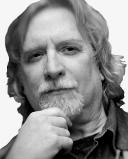Religion
The Paradox at the Heart of Psychology
Are we doing science, or are we merely mapping the insides of our minds?
Posted July 30, 2015
There is a gigantic paradox lying at the heart of psychology. This blog post reveals it. It is well-known that there is a paradox lying at the heart of mathematics: namely, that there are sets that are bigger than themselves (or, stated another way, sets that both contain themselves and also don’t contain themselves). How could this have happened to a perfectly respectable field like psychology? Here’s how -- and big surprise! -- philosophers are heavily implicated, just like they were in unmasking the paradox at the heart of math.
As psychological understanding of the human mind has increased, we have discovered that human minds impose patterns on input, rather than simply responding to patterns imposed on us. Humans are, to use an apt metaphor, pattern-hungry. Input limits what patterns we can see, but not by much. Historically, this essentially Kantian observation led to the downfall of behaviorism and the cognitive revolution in psychology
As research advanced, psychologists discovered that humans are so good at finding patterns that we can find them when they aren’t there at all. The discovery that humans find personally meaningful patterns in meaningless information was a revelation. Called apophenia, this hyper-pattern-producing property of humans works very nicely to help explain such things as the ubiquity of religious “evidence” -- finding the face of Jesus on a slice of toast or on a tortilla, for example, our susceptibility to conspiracy theories, seeing UFOs, ghosts, etc., and experiencing “psychic” phenomena such as communication with dead loved ones, telekinesis, and extra-sensory perception. (The term "Apophenia” has precedence over Michael Shermer’s term “patternicity” and is more general than “pareidolia.”)
Human apophenia also works well with new theories that human religiousness is an evolutionary adaptation. Putting such an explanation of religion together with the perceptual psychology of apophenia produces a powerful theory capable of explaining why religions persist, why there are so many of them, and why the evidence for each religion is robust and readily available, if only to believers.
There is, however, a question to ask here. How do we know we are apophenic? In order to know this, we have to know that we sometimes find patterns that aren’t there, or that are there, in some sense, but are meaningless or don’t mean what we intuitively think they mean. Enter science.
Suppose that you see a face on the disk of the full moon – the “man in the moon.” Such an image is very commonly perceived and is at least centuries old. But lunar scientists tell us that there is no face on the moon, rather the face is composed of dark lunar maria (“seas”) and light lunar terrae (“highlands”) which just by chance happen to be in a pattern that our pattern-hungry minds can parse as a face. Science explains away the man in the moon.
Also, human apophenia has deep evolutionary roots: any nervous system capable of learning can be expected to be apophenic. Fish that are fooled by lures and frogs that flick their tongues at anything that moves are displaying rudimentary forms of apophenia.
Here, then, is the encompassing theoretical framework apophenia offers us. For good evolutionary reasons, humans are pattern-hungry. This allows them to find in their environments the patterns that are there (i.e., the patterns "confirmed by science"), but also many patterns that aren’t there (i.e., patterns "disconfirmed or even ruled out by science"). This framework has great utility, for example, helping explain such robust social phenomena as religion.
The discovery of apophenia is a triumph of modern psychology. Here then is a case where one science, psychology, advances because other sciences are already very advanced. So, psychology’s triumph is also a triumph for the whole of science. Yay, us.
However, it is at such celebrations of triumph that the annoying philosopher arrives, asking the embarrassing question: “But doesn’t science itself depend on finding patterns?”
Apophenia cannot exist unless we can tell real patterns from merely imagined ones. Science is the arbiter here. But clearly, the philosopher notes, science stands revealed as performing some sort of self-confirmation: using science as the arbiter here is question-begging and hence not allowed.
Consider a large set of patterns. This set bifurcates into two disjoint subsets: the real patterns, and the non-real ones. Science is responsible for the bifurcation. That would be fine, except that science itself is pattern-hungry. When we ask science (in the guise of scientists) how to distinguish real patterns from non-real ones, it says, “By finding the real patterns.” [!]
The joy of the discovery of apophenia is now muted by the discovery that science’s step 1 is to assume that it is not itself apophenic. How very convenient.
No one but philosophers really like philosophy (and actually not many philosophers like real philosophy). Pointing out this darkly question-begging aspect of science to scientists (psychologists, specifically) will only result in the scientists exasperatingly saying: “Real patterns are those we can find over and over, they are public and objective; they are part of large naturally occurring systems for which we have vast theories making precise, experimentally validated predictions at several places. For example, only living things have naturally occurring faces, and biology explains why. Non-real patterns are explained away by science. We know that the pattern called the man in the moon is not a real pattern because we know from our theories of the formation of the moon that it isn’t alive. It is just chance that the seas and highlands are where they are and shaped like they are. Folding in our apophenic psychology does the rest. And no, the design of a face was not deliberately placed on the moon by wayward space aliens.”
The above special pleading continues to beg the question, but it works for scientists who have to get back to their research. But in a deep sense, scientists are defining “real pattern” as something that makes merely theoretical sense to us. Such a move will have to do, indeed, it is the only available move. But this doesn’t change the facts: Large natural systems are simply more patterns, and the large and successful scientific theories that explain them begin by assuming that these natural systems of patterns are not due to apophenia.
Apophenia has now destroyed any blithe confidence we have that we are unearthing deeper knowledge in our psychology and other sciences. Yet, we cannot live our lives without this so-called knowledge. Certainly, we cannot do science without it, and we cannot live our lives without science. Yet, are we doing science, or are we merely mapping the insides of our minds?





